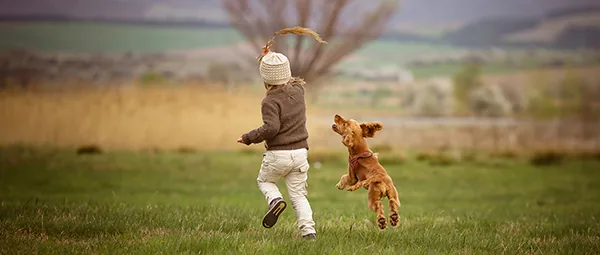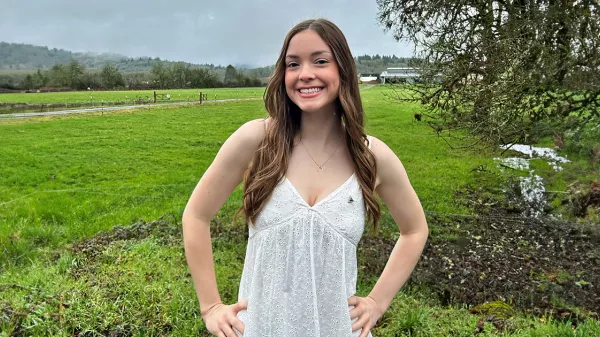Health Beat
College of Health newsletter
February 2024
All the news that fit to print
We encourage you to scroll through the whole page, but if you want to skip ahead to a particular section, select from the following.
Visibility
In the news
These stories are predominately made up from the college's magazine Synergies, press releases from OSU News and Research Communications, and media mentions.
Feb. 29, 2024
Home health care linked to increased hospice use
Findings suggest that early home health care may facilitate access to hospice care, resulting in greater comfort and support for individuals facing end-of-life decisions; highlighting the crucial role home health care plays in improving the end-of-life experience for older adults and their families.
Feb. 20, 2024
HDFS alumnus, NFL star to deliver commencement address
Steven Jackson, 2020 human development and family sciences grad, will return to Reser Stadium on June 15
Feb. 20, 2024
Study sheds light on links between cognitive and motor skill development in children with autism
College of Health researchers highlight the ways motor skills and cognitive skills develop in connection with each other in young children with autism.
Feb. 13, 2024
Doctoral researcher develops an AI-powered tool to asses workplace injuries
Existing workplace injury assessment tools didn’t meet her needs. So, she’s creating one that does.
Feb. 4, 2024
Do your kids want a dog? Science may be on their side
Kids who have dogs get significantly more physical activity, compared to kids who don't. Researchers followed 600 children over three years, and found young girls got the biggest exercise boost.
Feb. 2, 2024
Students with disabilities often left on the sidelines when it comes to school sports
Although disabled students are supposed to have equal access to school sports, questions remain about whether they participate at the same rate as their nondisabled peers.
Students and Alumni
Internship spotlights
See how College of Health students are applying classroom knowledge, building professional networks, and testing out fulfilling careers in health and well-being.
Kinesiology - General, BS
Oregon Health and Science University
Public health, BS
University of Pittsburgh’s Public Health Undergraduate Scholars Program
Public health, BS
The Springs Living at Lake Oswego
Dean's Health Heroes
Health Heroes stand out among their fellow students and alumni.
They are doing incredible and impactful work in our community, exemplifying our vision to bring health and well-being within reach for all.
Meet all of the Dean's Health Heroes.
Future physical therapist hopes to help meet the needs of underserved Oregon communities
A career change meant pursuing a new degree and discovering his life’s work
MPH alum is committed to community health
Good News for February 2024
Our faculty and staff do amazing things! They receive national, university and college honors; publish books and articles; serve on editorial boards and much more!
Geethika Koneru, a first-year PhD student in the HPHB program, received a teaching recognition at the OSU men's basketball game vs. Washington State on February 8.
Student-athletes selected her as their "most valuable professor," recognizing her support for their studies as they juggle athletic responsibilities. Thanks for supporting OSU student-athletes, Geethika
Rick Settersten, University Distinguished Professor of Human Development and Vice Provost of Faculty Affairs, has co-edited a special issue of Advances in Life Course Research titled "Networked Lives: Probing the Influence of Social Networks on the Life Course." The issue includes a collaboratively developed article by Rick and HDFS doctoral candidate Kara McElvaine, which explores the concept of "unlinking" lives. Read the special issue.
Steph Corey, MPH, doctoral student in the public health – health promotion and health behavior program, has been selected by the Cancer Special Interest Group at the Society of Behavioral Medicine (SBM) as the winner of the Student/Fellow Award for the 2024 SBM annual meeting.
The award is for her abstract, "Transgender and gender diverse cancer survivors' experiences accessing cancer screenings." Steph completed this work as part of the Thriving Together Study team, along with Associate Professor Jessica Gorman, Associate Professor Jonathan Garcia and MPH student Isabelle Ginavan. Congratulations, Steph!
Sunil Khanna, professor and director of the Center for Global Health, recently provided public testimony at an information hearing session of the Oregon State Legislature's Senate Committee on Health Care. Senator Deb Patterson, the committee's chair, extended the invitation to him. The focus of his presentation was hunger and health in Oregon and beyond. View Sunil's testimony presentation slides.
Kinesiology professor Megan MacDonald is quoted in "Do your kids want a dog? Science may be on their side," an article covering the growing body of research investigating how dogs can boost health, not just for kids but for people of all ages.
Research
Healthy Discoveries
The Healthy Discoveries program gives undergraduates the support they need to start conducting research projects early in their college careers. This valuable program is made possible thanks to the generous support of the Patricia Valian Reser Fund for Experiential Learning. Let's meet some of our 2024 undergraduate student researchers! We'll be highlighting a few of them each month.
Nutrition with an option in Nutrition and Health Sciences
Human Development and Family Sciences
Public health | Pre-health
Publications for the month of February
See what researchers across the college have published in the past month. See if you can guess the researcher(s) by just the publication title.
The article focuses on the relationship between pain attitudes and pain outcomes among people with bleeding disorders (PwBD). Pain is a significant issue for PwBD, and current pain treatments are often ineffective. However, there is limited understanding of the psychological factors involved in pain processing for this population.
The findings suggest that modification of pain attitudes presents a possible avenue for interventions to improve pain outcomes and increase patient satisfaction with pain management.
The significance of these findings is that they provide biomechanical evidence that current rehabilitation protocols following anterior cruciate ligament reconstruction (ACLR) may not be fully restoring normal movement patterns during high-risk activities like cutting.
These results highlight the need to further refine rehabilitation to better address these deficits and reduce re-injury risk upon return to sport after ACLR.
The findings have practical implications for clinicians designing ACLR rehabilitation programs and return-to-sport testing batteries.
This study contributes to the field of healthcare by providing reliable methods to identify virtual care modalities using electronic health record (EHR) data, highlighting the preferences and needs of underserved patient populations, and underscoring the importance of policy considerations in the provision of virtual care.
These conclusions have broad implications for healthcare providers, policymakers, and researchers in optimizing virtual care delivery, ensuring equitable access to healthcare services, and informing future healthcare policies.
The findings underscore the need for policies and programs that support the training of early childhood educators in trauma-informed practices and promote strong teacher-family-community partnerships. This can lead to the creation of more supportive and responsive educational environments for children experiencing adversity.
This study provides evidence that home health care plays a significant role in end-of-life care and is associated with increased hospice use. It underscores the need for further research into the concurrent use of home health and hospice care, especially as it pertains to improving the quality of end-of-life care for patients with serious illnesses, including dementia.
This case study demonstrates how representative community surveillance surveys can provide crucial real-time data to guide local public health responses during a pandemic.
The methods, trainings, and collaborations established serve as a model that can be scaled up and rapidly deployed to assess and mitigate the spread of disease in future public health emergencies.
Investing in such surveillance capabilities and fostering multi-sector partnerships are important for strengthening overall pandemic preparedness and response.
The study is important because it provides a detailed, long-term view of how cities and their surrounding areas have evolved, and how these changes have impacted local climates—particularly phenomena like the urban heat island effect, where urban areas can be significantly warmer than their rural surroundings. This effect can have major implications for public health, energy consumption, and overall environmental sustainability.
In many sports, athletes need to rapidly change direction, or "cut", to evade opponents or follow the play. However, cutting maneuvers, especially when unexpected, can lead to non-contact knee injuries like ACL tears. This study looked at how the amount of time athletes have to plan for a cut affects the way they slow down their body in preparation for the directional change.
This paper provides a critical review of the measurement of gender equitable attitudes (GEA), highlighting the evolution of these measures, the challenges in defining and measuring GEA, and the need for updated and inclusive measures that reflect contemporary understandings of gender and equity.
This study provides evidence that more comprehensive and individualized measures of chemical exposure are necessary to understand the full impact of air pollution on personal health. It also underscores the potential benefits of using personal monitoring devices, like silicone wristbands, to capture a more accurate picture of chemical exposures that individuals face in their daily lives.
The adverse health outcomes of COVID-19 infection translated into increased use of outpatient services for up to 12 months after infection, suggesting persistent effects of post–COVID-19 conditions.
This study challenges the hypothesis that Bone Marrow Adipose Tissue (BMAT) serves as an essential energy reserve for optimal hematopoiesis and suggests that BMAT is not required for immune system reconstitution or for maintaining bone turnover balance following severe injury in male mice.
This book chapter discusses the importance of prioritizing worker safety in supply chain management and suggests that safety managers may be best equipped to manage supply chain risks. The COVID-19 pandemic has also highlighted the need for a closer relationship between supply chain and safety management.
While a step in the right direction, Korea's policy had limited effectiveness in reducing out of pocket spending overall and utilization. More comprehensive reforms are likely needed to achieve equitable financial risk protection and access for patients with catastrophic diseases.
This research suggests that while heavy alcohol consumption might not drastically change the bone's initial quality or composition, it does affect the bone's mechanical properties in ways that could increase the risk of fractures. Specifically, once a crack forms in the bone, it's more likely to grow in those who consume a lot of alcohol, potentially leading to more severe injuries.
This study explored adults' worst memories of school recess and how they relate to physical and social health. Results showed that negative recess memories were associated with social isolation and physical injuries, highlighting the importance of recess as a developmentally impactful environment.
Research seminar videos
Weren't able to attend or watch a College of Health Friday research seminar? Here's your chance to get caught up with the recordings from February. Not every seminar is recorded, so make sure to attend any you can.
Feb. 23, 2024
Kathleen F. Carlson, PhD
Feb. 16, 2024
Vivek Shandas, PhD





















